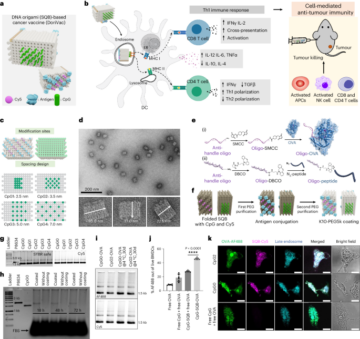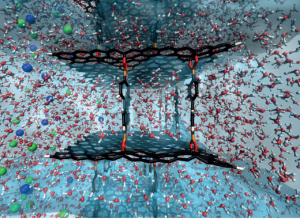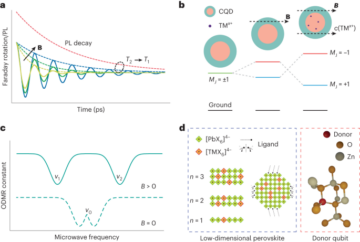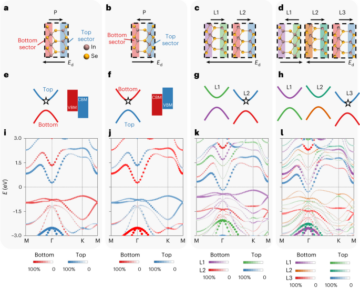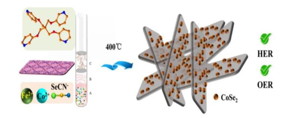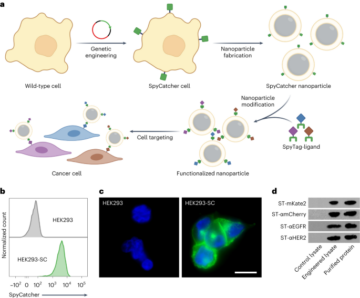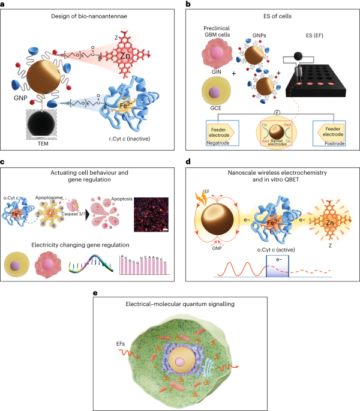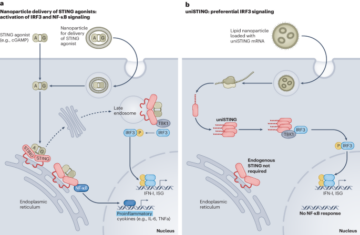
Eriksen, M. Plastic pollution in the world’s oceans: more than 5 trillion plastic pieces weighing over 250,000 tons afloat at sea. PLoS ONE 9, e111913 (2014).
Geyer, R., Jambeck, J. R. & Law, K. L. Production, use, and fate of all plastics ever made. Sci. Adv. 3, e1700782 (2017).
Jambeck, J. R. Plastic waste inputs from land into the ocean. Science 347, 768–771 (2015).
Sebille, Evan A global inventory of small floating plastic debris. Env. Res Lett. 10, 124006 (2015).
Horton, A. A., Walton, A., Spurgeon, D. J., Lahive, E. & Svendsen, C. Microplastics in freshwater and terrestrial environments: evaluating the current understanding to identify the knowledge gaps and future research priorities. Sci. Total Environ. 586, 127–141 (2017).
Ekvall, M. T. Nanoplastics formed during the mechanical breakdown of daily-use polystyrene products. Nanoscale Adv. 1, 1055–1061 (2019).
Hernandez, L. M. et al. Plastic teabags release billions of microparticles and nanoparticles into tea. Environ. Sci. Technol. 53, 12300–12310 (2019).
Lambert, S. & Wagner, M. Formation of microscopic particles during the degradation of different polymers. Chemosphere 161, 510–517 (2016).
Dawson, A. L. Turning microplastics into nanoplastics through digestive fragmentation by Antarctic krill. Nat. Commun. 9, 1001 (2018).
Nguyen, B. et al. Separation and analysis of microplastics and nanoplastics in complex environmental samples. Acc. Chem. Res. 52, 858–866 (2019).
Ter Halle, A. et al. Nanoplastic in the North Atlantic subtropical gyre. Environ. Sci. Technol. 51, 13689–13697 (2017).
Petosa, A. R., Jaisi, D. P., Quevedo, I. R., Elimelech, M. & Tufenkji, N. Aggregation and deposition of engineered nanomaterials in aquatic environments: role of physicochemical interactions. Environ. Sci. Technol. 44, 6532–6549 (2010).
Chen, Z., Westerhoff, P. & Herckes, P. Quantification of C60 fullerene concentrations in water. Env. Toxicol. Chem. 27, 1852–1859 (2008).
Benn, T. M. & Westerhoff, P. Nanoparticle silver released into water from commercially available sock fabrics. Env. Sci. Technol. 42, 4133–4139 (2008).
Wang, Y., Westerhoff, P. & Hristovski, K. D. Fate and biological effects of silver, titanium dioxide, and C60 (fullerene) nanomaterials during simulated wastewater treatment processes. J. Hazard. Mater. 201–202, 16–22 (2012).
Gangadoo, S. et al. Nano-plastics and their analytical characterisation and fate in the marine environment: from source to sea. Sci. Total Environ. 732, 138792 (2020).
Gigault, J. et al. Current opinion: what is a nanoplastic? Environ. Pollut. 235, 1030–1034 (2018).
Rist, S. & Hartmann, N. B. in Freshwater Microplastics: Emerging Environmental Contaminants? (eds Wagner, M. & Lambert, S.) 25–49 (Springer, 2018).
Hartmann, N. B. et al. Are we speaking the same language? Recommendations for a definition and categorization framework for plastic debris. Environ. Sci. Technol. 53, 1039–1047 (2019).
Auffan, M. et al. Towards a definition of inorganic nanoparticles from an environmental, health and safety perspective. Nat. Nanotechnol. 4, 634–641 (2009).
Isaacson, C. W., Kleber, M. & Field, J. A. Quantitative analysis of fullerene nanomaterials in environmental systems: a critical review. Environ. Sci. Technol. 43, 6463–6474 (2009).
Plastics: The Facts 2019 (PlasticsEurope, 2019); https://www.plasticseurope.org/en/resources/publications/1804-plastics-facts-2019
Resnik, D. B. How should engineered nanomaterials be regulated for public and environmental health? AMA J. Ethics 21, 363–369 (2019).
Mourdikoudis, S., Pallares, R. M. & Thanh, N. T. K. Characterization techniques for nanoparticles: comparison and complementarity upon studying nanoparticle properties. Nanoscale 10, 12871–12934 (2018).
Sander, M., Kohler, H.-P. E. & McNeill, K. Assessing the environmental transformation of nanoplastic through 13C-labelled polymers. Nat. Nanotechnol. 14, 301–303 (2019).
Rochman, C. M. et al. Rethinking microplastics as a diverse contaminant suite. Environ. Toxicol. Chem. 38, 703–711 (2019).
Liu, P. et al. Effect of weathering on environmental behavior of microplastics: properties, sorption and potential risks. Chemosphere 242, 125193 (2020).
Holmes, L. A., Turner, A. & Thompson, R. C. Interactions between trace metals and plastic production pellets under estuarine conditions. Mar. Chem. 167, 25–32 (2014).
Balakrishnan, G., Déniel, M., Nicolai, T., Chassenieux, C. & Lagarde, F. Towards more realistic reference microplastics and nanoplastics: preparation of polyethylene micro/nanoparticles with a biosurfactant. Environ. Sci. Nano 6, 315–324 (2019).
Pessoni, L. et al. Soap- and metal-free polystyrene latex particles as a nanoplastic model. Environ. Sci. Nano 6, 2253–2258 (2019).
Mitrano, D. M. et al. Synthesis of metal-doped nanoplastics and their utility to investigate fate and behaviour in complex environmental systems. Nat. Nanotechnol. 14, 362–368 (2019).
Wagner, S. & Reemtsma, T. Things we know and don’t know about nanoplastic in the environment. Nat. Nanotechnol. 14, 300–301 (2019).
Koelmans, A. A. Proxies for nanoplastic. Nat. Nanotechnol. 14, 307–308 (2019).
Azimi, P., Zhao, D., Pouzet, C., Crain, N. E. & Stephens, B. Emissions of ultrafine particles and volatile organic compounds from commercially available desktop three-dimensional printers with multiple filaments. Environ. Sci. Technol. 50, 1260–1268 (2016).
Alimi, O. S., Farner Budarz, J., Hernandez, L. M. & Tufenkji, N. Microplastics and nanoplastics in aquatic environments: aggregation, deposition, and enhanced contaminant transport. Environ. Sci. Technol. 52, 1704–1724 (2018).
Zettler, E. R., Mincer, T. J. & Amaral-Zettler, L. A. Life in the “plastisphere”: microbial communities on plastic marine debris. Environ. Sci. Technol. 47, 7137–7146 (2013).
Amaral-Zettler, L. A., Zettler, E. R. & Mincer, T. J. Ecology of the plastisphere. Nat. Rev. Microbiol. 18, 139–151 (2020).
Muncke, J. Exposure to endocrine disrupting compounds via the food chain: is packaging a relevant source? Sci. Total Environ. 407, 4549–4559 (2009).
Zimmermann, L., Dierkes, G., Ternes, T. A., Völker, C. & Wagner, M. Benchmarking the in vitro toxicity and chemical composition of plastic consumer products. Environ. Sci. Technol. 53, 11467–11477 (2019).
Hirai, H. et al. Organic micropollutants in marine plastics debris from the open ocean and remote and urban beaches. Mar. Pollut. Bull. 62, 1683–1692 (2011).
Crank J. The Mathematics of Diffusion (Elsevier, 1975).
Mercea, P. V. et al. Modelling migration of substances from polymers into drinking water. Part 1 – diffusion coefficient estimations. Polym. Test. 65, 176–188 (2018).
Al-Sid-Cheikh, M. et al. Uptake, whole-body distribution, and depuration of nanoplastics by the scallop Pecten maximus at environmentally realistic concentrations. Environ. Sci. Technol. 52, 14480–14486 (2018).
Karlsson, H. L., Gustafsson, J., Cronholm, P. & Möller, L. Size-dependent toxicity of metal oxide particles–a comparison between nano- and micrometer size. Toxicol. Lett. 188, 112–118 (2009).
Ruenraroengsak, P. Respiratory epithelial cytotoxicity and membrane damage (holes) caused by amine-modified nanoparticles. Nanotoxicology 6, 94–108 (2012).
Jiang, W., Kim, B. Y. S., Rutka, J. T. & Chan, W. C. W. Nanoparticle-mediated cellular response is size-dependent. Nat. Nanotechnol. 3, 145–150 (2008).
Zhao, J. & Stenzel, M. H. Entry of nanoparticles into cells: the importance of nanoparticle properties. Polym. Chem. 9, 259–272 (2018).
Johnston, C. J. et al. Pulmonary effects induced by ultrafine PTFE particles. Toxicol. Appl. Pharmacol. 168, 208–215 (2000).
Schwab, F. Barriers, pathways and processes for uptake, translocation and accumulation of nanomaterials in plants–critical review. Nanotoxicology 10, 257–278 (2016).
Rist, S., Baun, A. & Hartmann, N. B. Ingestion of micro- and nanoplastics in Daphnia magna – quantification of body burdens and assessment of feeding rates and reproduction. Environ. Pollut. 228, 398–407 (2017).
Miao, L. et al. Acute effects of nanoplastics and microplastics on periphytic biofilms depending on particle size, concentration and surface modification. Environ. Pollut. 255, 113300 (2019).
Astefanei, A. et al. Characterization of aggregates of surface modified fullerenes by asymmetrical flow field-flow fractionation with multi-angle light scattering detection. J. Chromatogr. A 1408, 197–206 (2015).
Bolea, E., Jiménez-Lamana, J., Laborda, F. & Castillo, J. R. Size characterization and quantification of silver nanoparticles by asymmetric flow field-flow fractionation coupled with inductively coupled plasma mass spectrometry. Anal. Bioanal. Chem. 401, 2723–2732 (2011).
Kammer, F., von der, Legros, S., Hofmann, T., Larsen, E. H. & Loeschner, K. Separation and characterization of nanoparticles in complex food and environmental samples by field-flow fractionation. Trends Anal. Chem. 30, 425–436 (2011).
Baalousha, M., Stolpe, B. & Lead, J. R. Flow field-flow fractionation for the analysis and characterization of natural colloids and manufactured nanoparticles in environmental systems: a critical review. J. Chromatogr. A 1218, 4078–4103 (2011).
Gigault, J., El Hadri, H., Reynaud, S., Deniau, E. & Grassl, B. Asymmetrical flow field flow fractionation methods to characterize submicron particles: application to carbon-based aggregates and nanoplastics. Anal. Bioanal. Chem. 409, 6761–6769 (2017).
Correia, M. & Loeschner, K. Detection of nanoplastics in food by asymmetric flow field-flow fractionation coupled to multi-angle light scattering: possibilities, challenges and analytical limitations. Anal. Bioanal. Chem. https://doi.org/10.1007/s00216-018-0919-8 (2018).
Dazzi, A. & Prater, C. B. AFM-IR: technology and applications in nanoscale infrared spectroscopy and chemical imaging. Chem. Rev. 117, 5146–5173 (2017).
Domingos, R. F. et al. Characterizing manufactured nanoparticles in the environment: multimethod determination of particle sizes. Environ. Sci. Technol. 43, 7277–7284 (2009).
Stone, V. et al. Nanomaterials for environmental studies: classification, reference material issues, and strategies for physico-chemical characterisation. Sci. Total Environ. 408, 1745–1754 (2010).
Mintenig, S. M., Bäuerlein, P. S., Koelmans, A. A., Dekker, S. C. & Van Wezel, A. P. Closing the gap between small and smaller: towards a framework to analyse nano- and microplastics in aqueous environmental samples. Environ. Sci. Nano 5, 1640–1649 (2018).
Davranche, M. et al. Are nanoplastics able to bind significant amount of metals? The lead example. Environ. Pollut. 249, 940–948 (2019).
- analysis
- Application
- applications
- article
- barriers
- Beaches
- body
- caused
- chemical
- classification
- Communities
- concentration
- consumer
- Consumer products
- contaminants
- Current
- Detection
- Emissions
- Environment
- environmental
- flow
- food
- Framework
- future
- gap
- Global
- Health
- How
- HTTPS
- identify
- Imaging
- inventory
- investigate
- issues
- knowledge
- language
- Law
- lead
- light
- LINK
- manufactured
- mathematics
- metal
- model
- North
- ocean
- oceans
- open
- Opinion
- packaging
- particle
- perspective
- Plasma
- plastic
- plastics
- Production
- Products
- public
- quantitative
- Rates
- reproduction
- research
- response
- review
- Safety
- SEA
- Silver
- Size
- small
- studies
- Surface
- Systems
- Tea
- Technology
- test
- thompson
- Titanium
- tons
- Transformation
- transport
- treatment
- urban
- utility
- W
- Water
- What is

